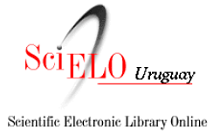Effectiveness of organic acid blends in inhibiting Salmonella species
Keywords:
Feed safety, Organic acids, Salmonella controlAbstract
Ensuring the safety of animal feed is essential, as contamination can negatively impact the health and performance of animals. Feed often serves as a vector for pathogens, such as Salmonella, which is a significant threat. Formaldehyde, despite being widely used as an antimicrobial agent in ingredients and feeds, was classified as carcinogenic and banned by EFSA in Europe and Turkey since 2017, leading to the search for alternatives. Organic acids, without legal restrictions, have proven effective in reducing bacterial loads, especially against Salmonella and E. coli, being well-documented for their antimicrobial properties and efficacy against gram-negative bacteria. This study aimed to evaluate the efficacy of a synergistic blend of free and buffered organic acids based on formic acid on a silica carrier, compared to formaldehyde in controlling two critical Salmonella species, S. Mbandaka and S. Senftenberg, for feed safety. The trial involved seven treatments: Treatment 1, the control, with no preservative added nor bacterial contamination; Treatment 2, positive control, with 1.0 ml bacterial culture contamination at a concentration of 106 CFU/ml; Treatment 3, formaldehyde, with samples contaminated with the same bacterial solution and the inclusion of 1.0 L/ton of formaldehyde; Treatments 4, 5, 6, and 7, where samples were contaminated with the bacterial solution and added the blend of organic acids at doses of 1.0, 1.5, 2.0, 3.0, and 5.0 L/ton, respectively, each distributed in duplicate in sterile tubes. Each tube was incubated aerobically for 48 hours at room temperature and 37 °C. Serial dilutions were performed, and the pour plate method was used to streak the samples on PCA agar, following ISO 6579-1:2017 standards for S. Mbandaka and S. Senftenberg. The samples were incubated at 37 °C for 48 hours, with duplicate counts of S. Mbandaka and S. Senftenberg performed. For samples with bacterial counts below the limit of quantification (<1.0 × 101 CFU), presence/absence tests were conducted. All inclusions of the organic acid blend showed negative results for both species of Salmonella, regardless of the dosage, indicating that even a low application rate of organic acid at the lowest inclusion (1.5 L/t) can become a safer option for feed preservation, effectively reducing the incidence of S. Mbandaka and S. Senftenberg without the public health risks associated with formaldehyde.
Downloads
Published
How to Cite
Issue
Section
License
Copyright (c) 2025 Sociedad de Medicina Veterinaria del Uruguay-Facultad de Veterinaria, Universidad de la República

This work is licensed under a Creative Commons Attribution 4.0 International License.











